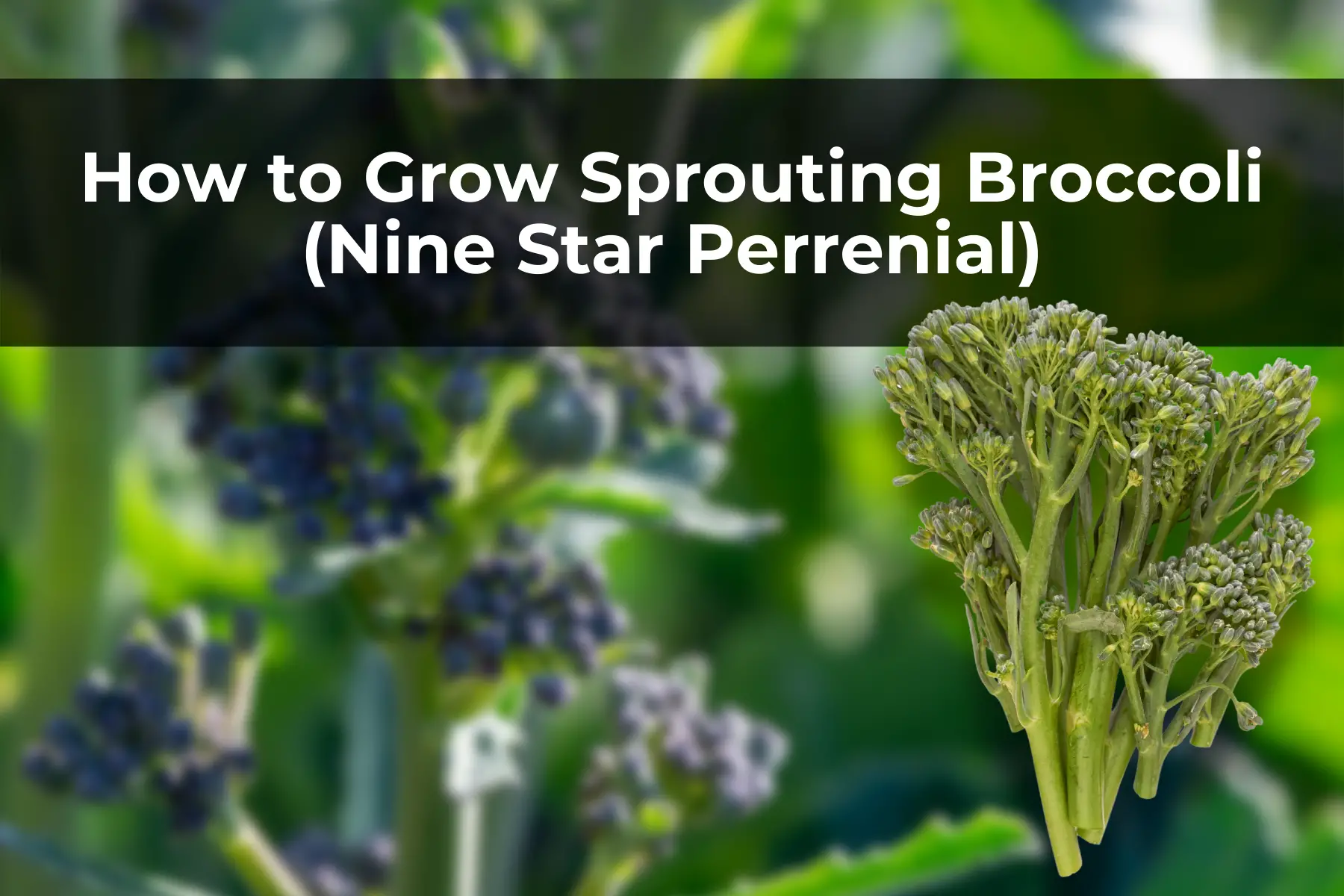Last Updated on April 16, 2024 by Real Men Sow
The majority of varieties of broccoli are annuals. They produce a large head at season’s end and that’s it. However, perennial broccoli (also known as sprouting broccoli or nine-star perrenial) produces many tenders, and small florets. Broccoli can still be grown in colder areas, even if it is below 20 degrees. Its love for cool temperatures makes it a great choice for cool-weather gardeners.
Sprouting Broccoli Growing Conditions to Thrive
Broccoli thrives in cooler areas with temperatures below 26°C. They will not produce a head if it is heat-stressed. In hot climates, you can slow down the bolting process by cooling the soil with mulch.
However, Broccoli can be grown in full sunlight. The vegetable can thrive in six hours of sunshine per day. This perennial can benefit from afternoon shade in hotter climates.
Why You Should Grow Sprouting Broccoli
Adaptability To Climate Extremes
Broccoli can withstand cold temperatures and mild frost. Broccoli can withstand dry conditions provided that the soil is rich and well-nourished and cooled by compost and mulch. However, prolonged heat can cause broccoli to become bitter if it is exposed to too much heat. Broccoli can also be sensitive to salty soils, so it is not recommended for coastal plantings.
Drought Resistance
Broccoli can withstand dry conditions provided that the soil is well-nourished, rich, and cool. However, prolonged heat can cause damage to broccoli.
Soil Preparation for Sprouting Broccoli
Broccoli thrives in sandy soil that is well-drained and richly composted. It has a more shallow root structure than other perennials, so it can grow in soils that are shallow.
How to Plant Sprouting Broccoli
Indoor Planting
In four-inch pots that are at least half an inch in diameter, plant two to three broccoli plants in approximately a quarter of an inch of soil. After three leaves have been sprouted, thin your plants to one per pot. To start broccoli seeds, you don’t need a heat mat. It is important to get them into the ground as soon as possible so they don’t become rootbound. Broccoli plants that are left in small pots for too long will either bolt or flower too soon after they are transplanted. When planting a fall crop, ensure that seedlings are kept cool and sheltered before putting them in the garden. Excessive heat can cause spindly, unproductive plants. Planting in the fall or spring will yield the best results.
Outdoor Planting
Plant three to four broccoli seeds per ft. about a half inch deep if you want to grow them directly in your garden. Once the seeds sprout, thin each plant to one per foot. After the danger of hard spring, and frost has passed, you can plant seeds indoors. The closer you plant your broccoli, the greater chance it will grow its head.
Sprouting Broccoli Care Guide
Growing
Broccoli can grow straight when it has strong stems. When the head develops in the middle of the plant, you will know that it is ready for harvest. In shallow soil, plants can become too heavy. When your broccoli starts to grow, tie it to bamboo stakes to stabilize it.
Broccoli plants don’t need to be trimmed, but you should remove the bottom leaves when they start to wilt in order to prevent mildew. Broccoli should sprout continually if you want to stop the heads from flowering or producing seeds. After plants stop producing shoots, they will cease to produce seeds.
When broccoli sprouts, weeds are usually a problem. Broccoli has a very shallow root system so make sure to weed the area before you plant it. Mulching with straw or shredded leaves can reduce weed growth, especially in the early part of the growing season. Because the broccoli leaves are so big, it is often more difficult for weeds under the heads to grow. Broccoli likes nutrient-rich soil, so each spring add a layer of compost.
Watering
Your broccoli should be given plenty of water, but you must let the soil dry between waterings to prevent it from rotting. Broccoli can develop its distinctive head if it isn’t given enough water. Try to give your plants approximately one-to-two inches of water every week.
Mulching
Mulching with straw or shredded leaves can reduce weed growth, especially at the beginning of the growing seasons.
Sprouting Broccoli Pests and Diseases
Cutworms, Cabbage Worms, And Flea Beetles Are All Broccoli Pests
Cutworms can be eliminated by placing a towel or a cardboard tube made of toilet paper over the broccoli stalk when it is young and thin. To stop cutworms, you can place a diatomaceous Earth (DE) ring around your brassica stems. DE is made of pulverized marine phytoplankton. It is extremely sharp.
The DE is very sharp and can be bitten by pests. After heavy rains, the DE should be reapplied and not directly watered. It is much harder to control flea beetles. They can move quickly and have a hard shell that protects them against organic treatments. They don’t like wet leaves so you can mist your plants to keep them away.
Yellow sticky traps should be placed every five feet around your plants. These traps are attractive to beetles because their tiny bodies can’t resist the adhesive. You can either manually remove cabbage worms or use insecticidal soap to control them.
Club Root Fungus And Various Types Of Rot
Keep the soil well-drained to prevent this. If the plant has been infected by club roots, you can increase the soil pH with some lime. The plant will eventually have to be taken out and you should avoid planting broccoli there next year. The most common sign of downy mildew is yellow spots on the leaves. This is usually due to moist weather. To ensure that leaves get good air circulation, keep them as dry as you can and avoid crowding them.


